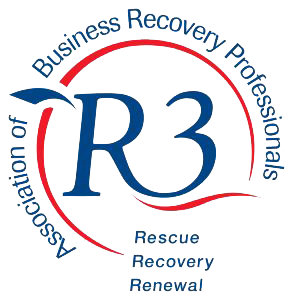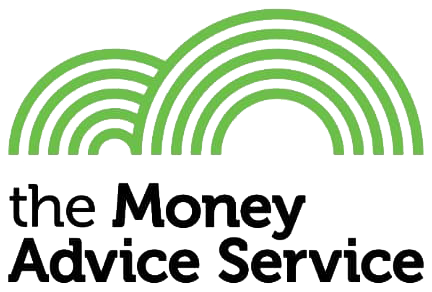Before you file for bankruptcy read this. We break down everything you need to know about IVA vs bankruptcy so you can choose the best option for your situation. Are you looking for a way out of financial trouble? It’s nothing to feel shame over. A lot of people go through hard times at some point in their lives. And, as if the situation wasn’t stressful enough, you have to decide which vehicle is best for you to reclaim your financial life.
With so many options available, it can be overwhelming. How do you know which is the right solution for you? Today, we’re going to discuss two of those options.
We’re going to talk about an IVA vs bankruptcy. These are two of the most popular solutions people choose to get themselves back on their feet. And if you’re not familiar with either of them, that’s ok.
We’re going to dive deep into what both of these solutions are and what they mean for you and your family moving forward. By the end of this article, you’ll be able to intelligently discuss both options and work together to come to a solution that’s right for you.
Let’s get to it.
What Is An IVA?
An IVA is a legally binding agreement. The IVA meaning is Individual Voluntary Arrangement.
With an IVA, you and your Insolvency Practitioner (IP) will work with your creditors to make a plan for the repayment of all of the debt you owe. It’s important to discuss, at length, your options before committing to an IVA.
They are a good option for people to get out of insolvency. An IP will walk you through how you can put an IVA to work for you. It’s important to find the best IVA company.
IVAs can be lifesavers when you let the experts show you how to use them to your advantage.
Also, your IP should be presenting you with every possible option before resorting to an IVA. Make sure they are acting in your best interest. That’s why it’s important to do your research and have discussions with your IP to see if an IVA is right for you.
The IVA Process
If you’re not familiar with what to expect when filing for an IVA, let’s do a quick rundown of what the process entails. There are a few steps that you’ll want to become familiar with so you know how they should be moving along when they arise. Firstly, our team will assess your financial situation, budget and types of debt. Together we can explore the best possible solution for your situation and discuss IVAs, debt relief orders, bankruptcy and other possible solutions.
Interim Order
The truth is, Interim orders are somewhat rare when it comes to the IVA process. It is issues only in certain circumstances, and even then it’s easier and quicker to get the IVA approved before any court action is taken. Filing an Interim Order is task that your IP will do for you. The purpose of the interim order is to “freeze” your creditors in a sense.
If you owe creditors money, they may attempt to file their own court orders to force you to pay. By filing the interim order, your IP is letting everyone know that you’re working on an IVA. As a result, creditors can’t continue to file orders against you to demand payment.
Get A Financial Picture
This next step is where you get involved with the process. At this point, you’re going to work with your IP to get a full picture of your current financial situation.
You’ll want to compile an entire list of your debts, as well as your income. Any pay stubs, bank statements, etc. You’ll also need to compile a list of your assets. Creditors may suggest the sale of a house or car to raise more money to repay your debt balance.
Once you and your IP get all of your paperwork together, you’ll work together to come up with an appropriate repayment amount. This amount is typically paid back over 5 to 6 years.
Standard practise is to offer to pay as much as you can afford monthly. This way your IVA is more likely to get accepted by your creditors.
Write A Proposal
Once you and your IP decide how much is appropriate to repay your creditors, your IP will draft a proposal. This is the first draft of your IVA agreement. This isn’t your official IVA.
Right now, you’re in a negotiation with your creditors. It’s up to your creditors to decide what works for them and what doesn’t.
Final Decision
Once the proposal is ready, your IP will call a meeting with all of your creditors.
At the meeting, creditors will vote on the proposal. If it’s accepted, all creditors have to honour the IVA. Even the ones who vote against it.
If it’s rejected, you and your IP will have to go back to the drawing board.
What Is A Bankruptcy?
Much like an IVA, bankruptcy is another legal option for dealing with insolvency. They both have their differences, so making sure bankruptcy is right for you is the most important step.
Much like an IVA, it should only be considered when there are no other options for you to get out of debt.
The Bankruptcy Process
If you decide that bankruptcy is the best option for you, it’s helpful to know the process. Whether you’re filing for an IVA or bankruptcy, information is your best weapon. You want to be as informed as possible so you can ask the right questions, and make sure you’re setting yourself up for a fresh start.
The last thing you want to do is go through the process of an IVA or bankruptcy and realise it left you worse off than you started.
Fill Out Your Paperwork
The first step of bankruptcy is to fill out your bankruptcy form and submit your fee. You’ll be working with a solicitor on this, so they should be able to help you with any difficult steps of the process.
The standard fee to start the bankruptcy process is 680 pounds. The only way this fee gets returned to you is if you decide to stop the process before submitting your application.
Set Some Money Aside
At this point in the process, you’ll be able to take out some money for living expenses. There is typically a delay of several days between filing your bankruptcy and the official receiver taking control of your assets.
Once the process starts, your accounts may be frozen. You may want to take out enough money to cover your next few weeks’ worth of living expenses.
Wait For the Adjudicator’s Ruling
Once the application is submitted, you’ll have to wait for the adjudicator to make a ruling on your bankruptcy case. The Adjudicator may ask for more information. If they need more information from you, it could delay the ruling on your bankruptcy.
That’s why it’s important to have all of your paperwork ready from the beginning.
Finalising the Process
Once the Adjudicator makes their decision, a bankruptcy order is made. From there, you work with the official receiver as they administrate your bankruptcy.
Once that’s done, you may need to open a new bank account so you can start fresh. From there, the last and final step is for you to receive a discharge from your bankruptcy.
IVA vs Bankruptcy
So what are the main differences between an IVA and bankruptcy? What are the similarities? Being able to compare and contrast the details of both is huge for deciding which process is right for you.
Similarities
Well, there are a few things that an IVA and bankruptcy have in common. Both processes will stay on your credit file for up to six years from the start of the process. Until the IVA or bankruptcy falls off of your credit file, it may be hard for you to get any sort of loan or additional credit.
Her majesty’s government keeps track of everyone who has gone through an IVA or bankruptcy. Once you go through one of these processes, your name will be put on the Individual Insolvency Register. This is a running list of everyone who has gone through an IVA or bankruptcy.
Your name comes off of the list within three months of the completion of your IVA or bankruptcy period.
Both processes are also formal insolvency solutions. This means that no creditor can contact you, by any method, while the processes are being conducted. The phone calls and debt letters will stop.
You can breathe easy while you get yourself back on the right foot.
Differences
One of the main differences between an IVA and bankruptcy is concerning your home. If you’re currently renting, both processes don’t really affect your living situation. If you own your home, however, you’re going to want to choose wisely.
If you own a home as you’re going through an IVA, chances are they won’t make you sell your home. In most standard IVAs, you’ll be forced to remortgage your house six months before the end of your repayment period.
With a bankruptcy, however, the process is different. The official receiver in charge of administering your bankruptcy may force you to sell your home. They will typically do this if there is equity in your house.
Cars are also treated differently in an IVA as opposed to bankruptcy. With an IVA, as long as you drive a moderately priced make and model of vehicle, you’ll be able to keep it. With bankruptcy, however, you’ll be expected to sell your vehicle.
The only time you’ll be able to keep your vehicle during bankruptcy is if the vehicle is essential to your everyday life. This means that you can’t get to school or work without it.
Businesses and Employment
In addition to the above differences, it also pays to take a minute to explore how an IVA or bankruptcy can affect businesses or employment.
If you own a business, an IVA may be a better option for you. If you declare bankruptcy, the odds are good that your business will be shut down. Choosing an IVA as a business owner, however, you’ll still be able to operate your business.
Your business bank accounts will stay open and key managers within your business will be allowed to stay in their positions.
An IVA may also be a better solution when it comes to your job. It’s not likely for you to lose your job during an IVA. During the bankruptcy process, however, you may end up losing your job.
If you are a senior manager in a company, for example, your bankruptcy may prevent you from continuing that position.
Other positions affected by the bankruptcy process are accountants, solicitors, financial advisors, doctors, dentists, and estate agents.
Choosing the Right IVA Firm
IVAs are a great option to relieve you of your debt. The team at becomedebtfree.com has helped thousands of people drastically reduce their debt liability and move on with their lives through IVAs. Let our team of experts help you to pay off your debt and move on with your life.
Leave it to the pros and you’ll be able to look back at your IVA as one of the best decisions you’ve ever made.
Choosing the right firm is also an important part of maximizing the amount of debt you can write off through your IVA. Clients can typically write off approximately 90% of their debt through their IVA.
This means you won’t be responsible for anywhere near the entire total of your outstanding debt. Once your repayment amount, and repayment plan, are negotiated, that’s it. Any interest you’re paying on your accounts will also be frozen as long as you continue to make your IVA payments.
All remaining debts will be written off at the end of your IVA. And if your circumstances change, your IVA can work with you to give you a payment break or vary the terms of your IVA agreement.
You’ll be able to make your monthly payments and breathe easy. Now, most of your monthly salary can go toward making a life. It doesn’t have to go to large debt bills anymore.
The Choice Is Yours
At the end of the day, the right choice for you will depend on your individual situation. Of course, we always recommend talking to a professional when it comes to these processes. Do your own research, make sure you’re asking the right questions but, ultimately, work with a solicitor or IP you can trust to help you choose an IVA vs bankruptcy.
If you have any more IVA questions or bankruptcy questions, contact us at any time. We are here to help and are willing to do whatever it takes to help you find the right solution for you.








